Avro CF-105 Arrow, A Short History – After the Second World War, at a time when the British Royal Air Force was still recovering and had no money to think about a new interceptor, Avro Canada developed the CF-100, often dubbed the “Canuck.” As the first combat aircraft of all-Canadian design, it proved to be an excellent long-range, all-weather fighter.
More importantly, it highlighted that the newly formed Avro Canada – an offshoot of the British-based aircraft manufacturer – showed brilliance in completing a challenging project quickly.
From that success, in the mid-1950s, work progressed on the Avro Canada CF-105 Arrow, a giant, delta-winged interceptor. It offered a bright hope for the future of the Canadian aircraft industry, and had the potential of providing the Royal Canadian Air Force (RCAF) with the capability to meet Soviet bombers – and possibly destroy them in a war – as far away as the North Pole. After earning the right to develop and build the aircraft, Avro Canada grew significantly, and by 1957, employed more than 20,000 people – making it one of the largest companies in the nation. It drew major investment from the government as well at its own employees.
Confidence in the company, and in Canada’s aerospace industry, was soaring high. But like Icarus, it soon came crashing down.
Avro CF-105 Arrow – The Details
Development of the Arrow progressed quickly, and it has largely been remembered as being one of the most advanced aircraft of its era, while it was also widely praised for its power and beauty. It also helped to establish Canada as a world leader in scientific research and development.
To say that everything about the Arrow was massive is an understatement. It was an immense project in size, scale and ambition. The aircraft itself was enormous as well. Weighing about 20,000 kg (44,000 pounds) empty, with a 15.2 m wingspan, it was a huge aircraft for an interceptor.
It was also a highly advanced aircraft that required many of its components to be specially developed. It boasted the world’s first computerized flight control and weapon system, while it was faster than any jet in its class. The Arrow was designed to travel at nearly twice the speed of sound at an altitude of 53,000 feet. Developed without the aid of computers or simulation tools, the designers relied on scale models for wind-tunnel testing.
Avro CF-105 Arrow – Why It Failed
The first CF-105 Arrow prototype was rolled out on October 4, 1957 – and more than 12,000 people arrived to see the advanced-looking aircraft. However, that event was largely overshadowed by the USSR’s launch of Sputnik 1 into orbit on that same day – and which heralded the dawn of the space age and potentially the end of the Arrow’s main target, the long-range bomber.
A total of five Arrows took part in flight tests in a program that began in 1958, but the project was doomed due to political and technical woes. The high cost of the program
The Arrow was canceled in February 1959 by the government of the newly elected Canadian Prime Minister John Diefenbaker, who sought to cut federal spending. It likely didn’t help that Diefenbaker, a Progressive Conservative and teetotaler, had a poor relationship with Avro Canada’s President Crawford Gordon, Jr., who was known for his love of smoke and drink.
The Avro Canada CF-105 never entered production, and the RCAF eventually acquired the American-built CF-101B Voodoo instead. Avro Canada never recovered from the program’s cancellation and ceased operations in 1962.
Nearly three decades after the program was shuttered, a four-hour TV miniseries about the Arrow program was produced for CBC Television. Titled simply The Arrow, it starred notable Canadian actors including Dan Aykroyd, Michael Ironside, and Sara Botsford and offered a dramatized look at the attempt to produce the supersonic jet. It went on to have the highest viewership to that point for a CBC program – perhaps highlighting just how much this jet meant to the Canadian people.
BONUS: CF-105 Photo Gallery
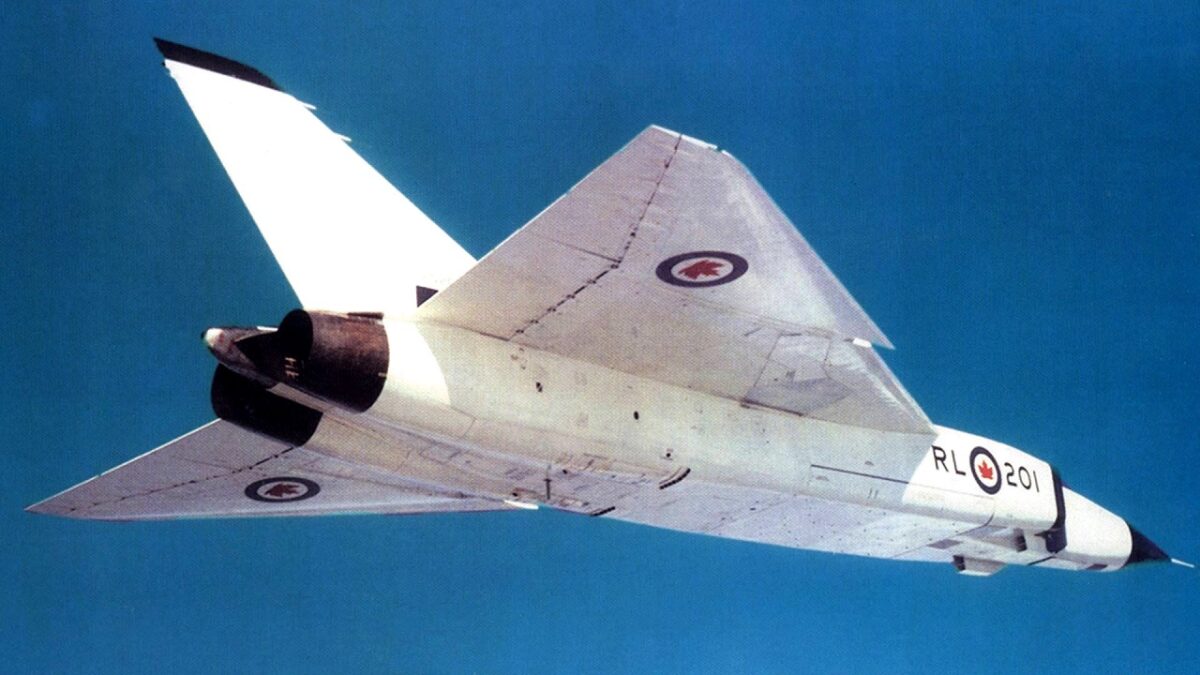
CF-105. Image Credit: Creative Commons.
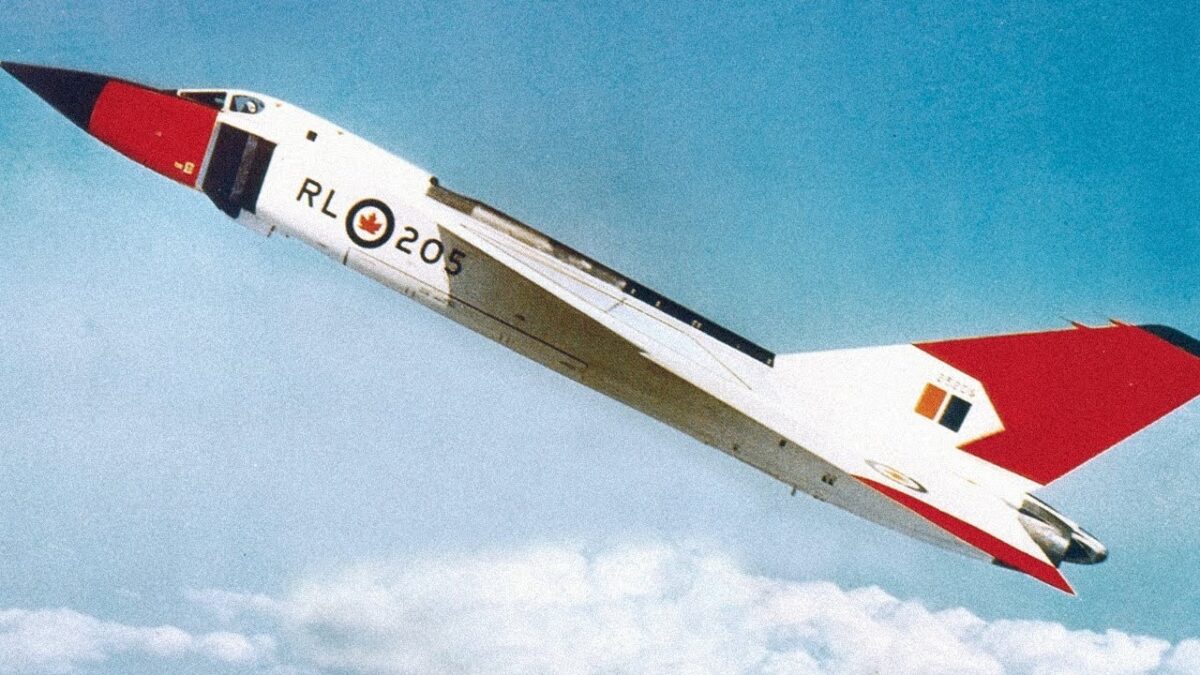
Avro CF-105 Arrow. Image Credit: Creative Commons.
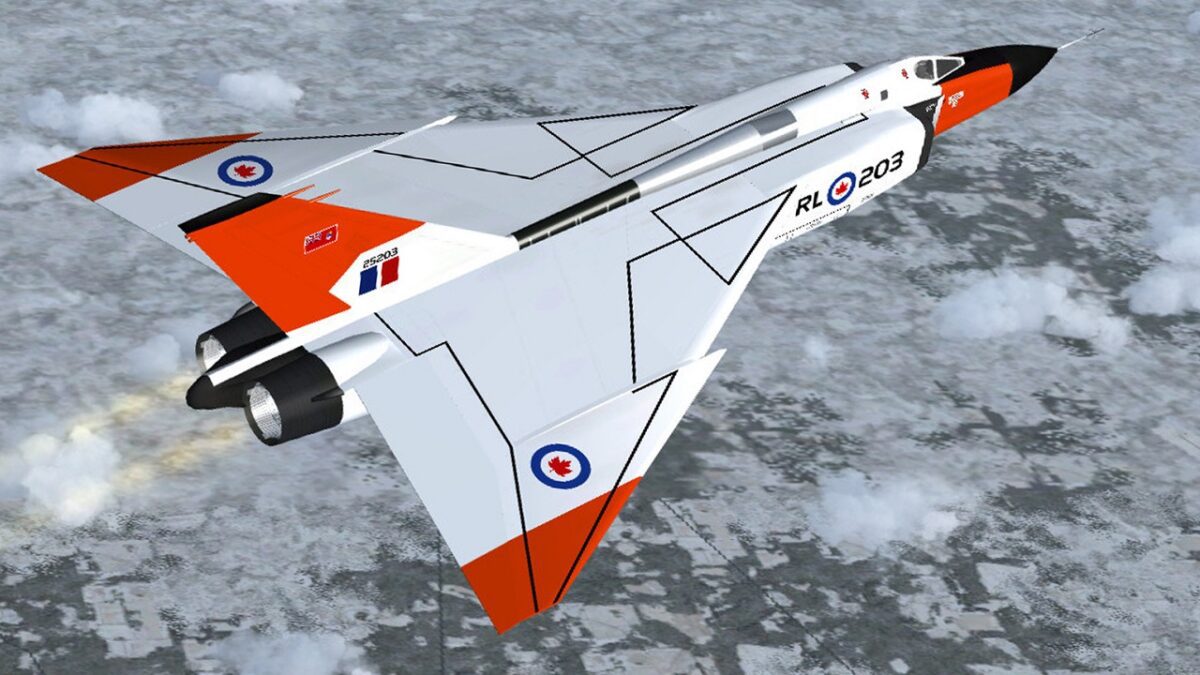
Avro CF-105 Arrow. Image Credit: Creative Commons.
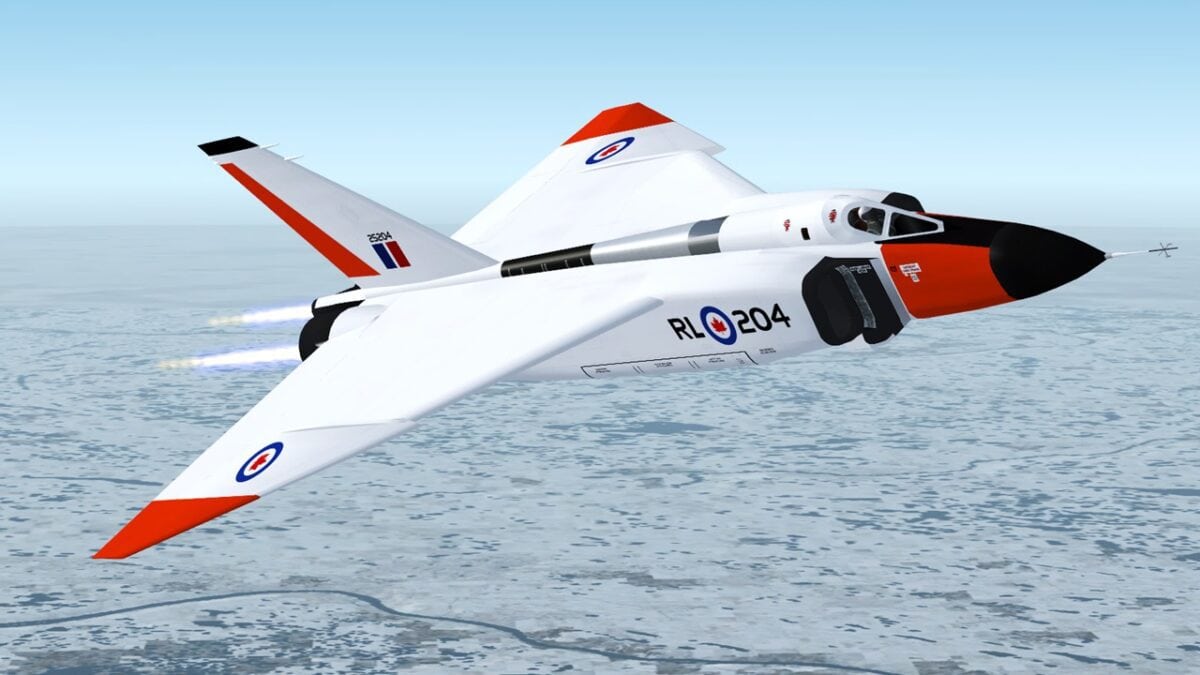
CF-105 Avro Arrow. Artist Rendering.
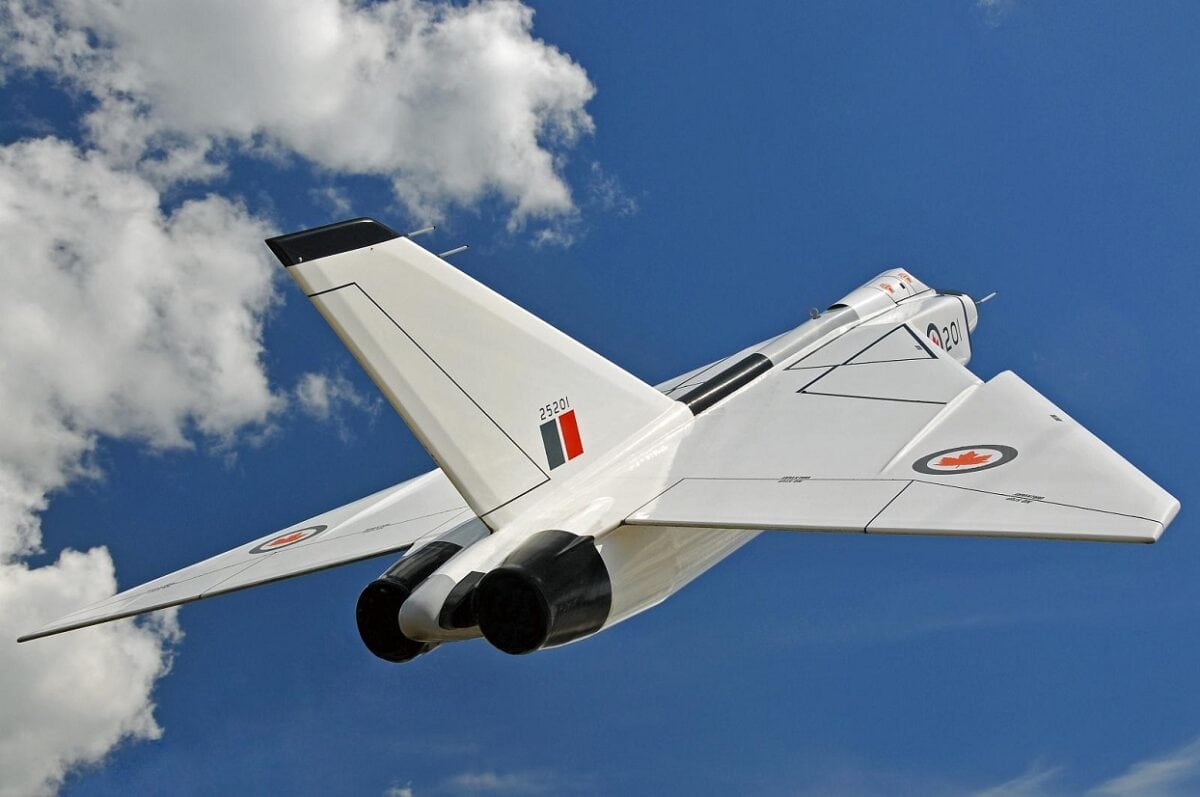
Image: Creative Commons.
MORE: The F-35 Now Comes in Beast Mode
MORE: Why the U.S. Navy Tried to Sink Their Own Aircraft Carrier
Now a Senior Editor for 1945, Peter Suciu is a Michigan-based writer who has contributed to more than four dozen magazines, newspapers and websites. He regularly writes about military hardware, and is the author of several books on military headgear including A Gallery of Military Headdress, which is available on Amazon.com. Peter is also a Contributing Writer for Forbes.

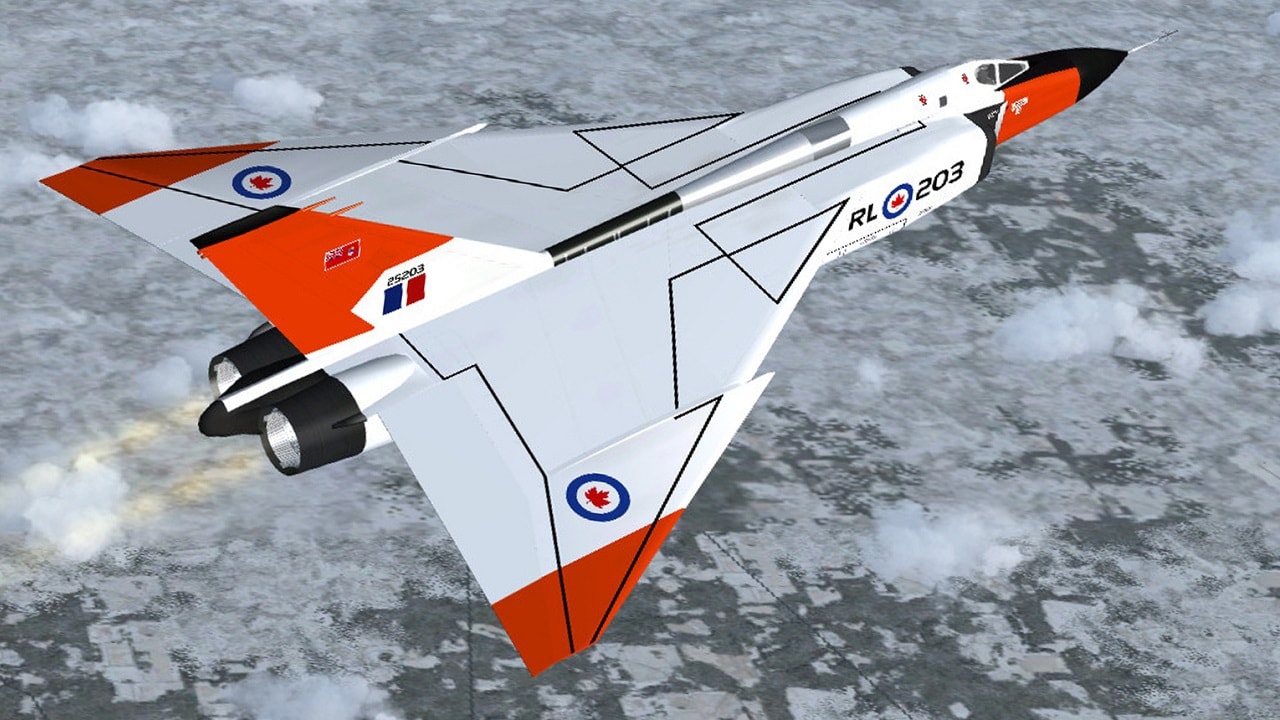
R Ward
May 13, 2022 at 2:16 pm
The Arrow lacked the one thing it needed to be an interceptor and that was range especially at top speed
It’s combat radius was less than 300 miles and looking at the existing airports and runways back then couldn’t cover more than 90% of the northern border against Soviet bomber penetration
And that’s when the weather was good
The VooDoo was already in production and although had a lower top speed had a much larger combat radius
Bases of Bomarc missiles were much better suited for northern defence
The CBC farce was basically set around having a woman engineer as part of the team which was 100% made up
Patrico
May 13, 2022 at 3:52 pm
Certes c est un très joli Jet en photo ! Il me rappel un puissant et célèbre bombardier figther évoluant. Mais même si les problèmes techniques et politiques avaient été résolus le CF 105 Arrow avec ce shape n auraient jamais put être efficace de nos jours ! Il a été abandonné heureusement pour les militaires Canadiens à mon simple avis. D autres proches et plus loin, civils surtout , vont s y essayer (sur les photos d ~Artistes) et vont y mordre ou plutôt affronter le vent relatif en pleine faces ! Alors attendons et regardons plutôt (ailleurs…) ou des Aérodynamiques Extrème Novatrices pointes leurs shapings!
Merci Thank you merci a Tous !
Ian Parker
May 14, 2022 at 7:08 am
Ullo Mr R, Werent some of the Canuck Avro’s Engineers from UK (AV Roe & Co), & werent some also from the defunked UK’s TSR2 Program, who ended up as Brits in the NASA program?? Cheers Ian.
Graham Cross
May 15, 2022 at 8:29 am
I watched my dad work on the Avro Arrow , he also worked on the Avro flying saucer. He would tell me the saucer was a good parking lot cleaner.The design team was split up and we came to Lockheed in Ga. and dad started designing the C5 cockpit with with some of the others that moved to Atlanta too. I asked him what happened to the other half of the design team ? He said they were hired by McDonald Douglas and helped develop the F4 phantom years later with alot of the design features from the Avro Arrow.
Scott Maclagan
May 13, 2022 at 3:27 pm
The Arrow’s range was greater than 300 miles and two new bases were to be built tp enable it to operate further north than North bay or Ottawa. One as RCAF Casey in Quebec, the other was to be in northern Manitoba but was not built. It could have operated from Val Dor or other northern fields such as Churchill and even Alert. As a Cf-100 crew we did a live intercept on the Arrow during a high speed run from Wiarton to Killaloe near Ottawa. We landed a CF-100 on a 3,000 ft emergency strip at Lac Des loups on Sep. 29, 1958. The Bomarc’s were not better suited for northn defence. Russia is still flying the TU -95 Bear 60+ years later!
Jeffery Thomas Smith
May 14, 2022 at 5:24 am
The real capital of Canada is up in the center of the land mass so very important projects
Mehmood
May 14, 2022 at 9:52 pm
This was a big blunder ..the leaders weren’t able to see the future…the Canadian military now doesn’t have the necessary arms nor personnel to defends the borders..and it’s hit home after the brutal Russian invasion of Ukraine..even the f-35 jets won’t be delivered soon enough..
Richard K.
May 13, 2022 at 5:39 pm
The Arrow had an operational range of 820 miles versus 1520 miles for the CF-101 Voodoo according to Wiki.
The CF-105 Arrow was a source of national pride that Canada could be a world leader in aeronautics but with a stroke of a pen that dream died and 12,000 people lost their jobs. Many of those engineers moved to the US and where their skills were put to good use.
Sweden with a population less than a third of Canada was able to develop a multirole fighter aircraft to protect its airspace and 50 years latter the SAAB Gripen is being flown by a half dozen airforces while Canada is still flying four decades old F-18 before it gets its first F-35 replacement latter this decade.
ZZaff Azad
May 15, 2022 at 10:12 am
Arrow was a masterpiece of technological advancement of that time. If that programe was continued, Canada could have changed the way countries are defended and the wars are fought today. Establishing aircraft manufacturing industry gives boost to many scientific developments. A missed opportunity due to to myopic approach of a few that has caused Canada deerly.
Patrick T
May 13, 2022 at 8:34 pm
The Arrow was a source of many firsts in aviation. One of the first fly-by-wire control systems, one of the first applications of a composite honeycomb structure (in its extremely thin wings) and most importantly to its ultimate fate, the very first titanium jet engines were developed by Avro subsidiary, Orenda. This would lead to its downfall. The PS-13 Iroquois engines were revolutionary, but they contributed to its demise due to the incredible expense of their development. Orenda also had to work with local chemical companies to develop the very first flame retardant chemicals for dealing with titanium fires, as these happened occasionally when test engines would overheat. This situation was not helped by the fact that there was a titanium shortage at the time and the CIA was working with Lockheed to develop the A-12, the all-titanium predecessor to the SR-71. Can’t have Canadians using up all the titanium. Interesting that the Soviets copied many aspects of the Arrow, including its rail-mounted engines and supersonic intake structure to use in their MiG-25 and later in the MiG-31. (which are currently in use as hypersonic missile launch platforms)
Jim
May 14, 2022 at 2:12 pm
Not at all surprising that the of the PS-13 engines were so expensive. The design and development of the J58 almost sent Pratt and Whitney into bankruptcy. I don’t know anything about the Iroquois engines, but I do know that very little titanium was used in the J58. Titanium was used in the airframe and skin of the A-12/SR-71 because it was so strong and lightweight for the conditions of flying at Mach 3 and the heat of friction developed at those speeds. As I’m sure you are aware aluminum would lose all it’s strength, and the aircraft would weigh twice as much if it were made of steel, which could take the temperature of friction. We found that out when the Russian pilot defected to Japan with a MiG-25 Foxbat. Have you read that the CIA set up shell corporations to buy titanium from Russia for the A-12? Russia was the chief source of titanium back then.
Very little titanium was used in the J58 engines because even titanium could not withstand the temperatures in the turbine and afterburner sections at Mach 3. Many people know that the A-12/SR-71 Blackbirds were not thrust limited as far as maximum speed. Instead maximum speed was limited by the Compressor Inlet Temperature, CIT, to a maximum of 427 degrees C (800 degrees F). But few know that the CIT limit of 427 C was picked because, since temperatures are additive throughout the engine, choosing a CIT of 427C made sure that the temperature in the turbine section stayed below the failure temperature of the turbine blades. EGT is sensed after the turbine section. So most of the J58 was made of alloys of steel, since only steel and alloys of steel could take the extremely high temperatures in the turbine and afterburner sections of the engine for hour on end. You may be aware that Pratt and Whitney had to develop special techniques to deliver bleed air to the turbine blades to cool them.
It’s also not surprising that the MiG-25 copied the Avro intakes, since both use a two dimensional intake structure. The A-12/SR-71 on the other hand, used axial symmetrical inlets. The axial symmetrical inlets on the A-12/SR-71 were truly marvelous pieces of engineering, and it took Lockheed a LONG time to get them to work in flight, unstarts, rough operation, buzzing. The Lockheed engineer in charge of the inlet design, Ben Rich (who followed Kelly Johnson as head of the Skunk Works), said the design of the inlets for the A-12 was the hardest job of his engineering career. He also said that at Mach 3 the J58 engines were only “pumps to keep the inlets alive”. This was because thanks to ram pressure recovery, at Mach 3 the inlets on the Blackbirds generated 54% of the thrust propelling it through the air, and the J58 engines only generated 17% of the thrust. (The afterburner/ejector generated the remaining 29% of the thrust.)
Stefan Stackhouse
May 13, 2022 at 8:38 pm
Politicians have managed to shoot down a remarkable number of aircraft over the decades. If only our anti-aircraft missiles could be as effective!
Gordon D Musselman
May 13, 2022 at 8:49 pm
5 Prototypes Arrows actually came off the production line. Another first that was carried out by Avro. There were several more aircraft in various stages of completion. Included was the first Arrow with the new Iroquois jet engine with higher thrust and range. It was days from flying and was rumored to have flown somewhere to avoid the cutting torches. The urban ghost has never been found but an Iroquois jet engine prototype was found in England and brought back to Canada to be restored. Still a mystery how it got there.
Grant Fedorak
May 13, 2022 at 11:20 pm
It’s not well known however Gerald Bull was on the team which was building the Avro Arrow in the beginning.
Russell Dawkins
May 14, 2022 at 1:42 am
I met an former Arrow design engineer in Victoria about 25 years ago. He was British and an ex-RAF Mosquito pilot. He surprised me by saying that the average age of the design engineers on the Arrow project at Avro was in the 20s.
D. Lebault
May 14, 2022 at 6:16 pm
Leave it to Conservatives to have no vision.
Roy Craft
May 15, 2022 at 4:09 am
Remember, this is a high altitude long range interceptor jet, not a short range “fighter” jet. Given Canada’s arctic frontier and far flung coasts – with electronic integration upgrades – this would still be extremely valuable to Canada today and such beast is unavailable anywhere else.